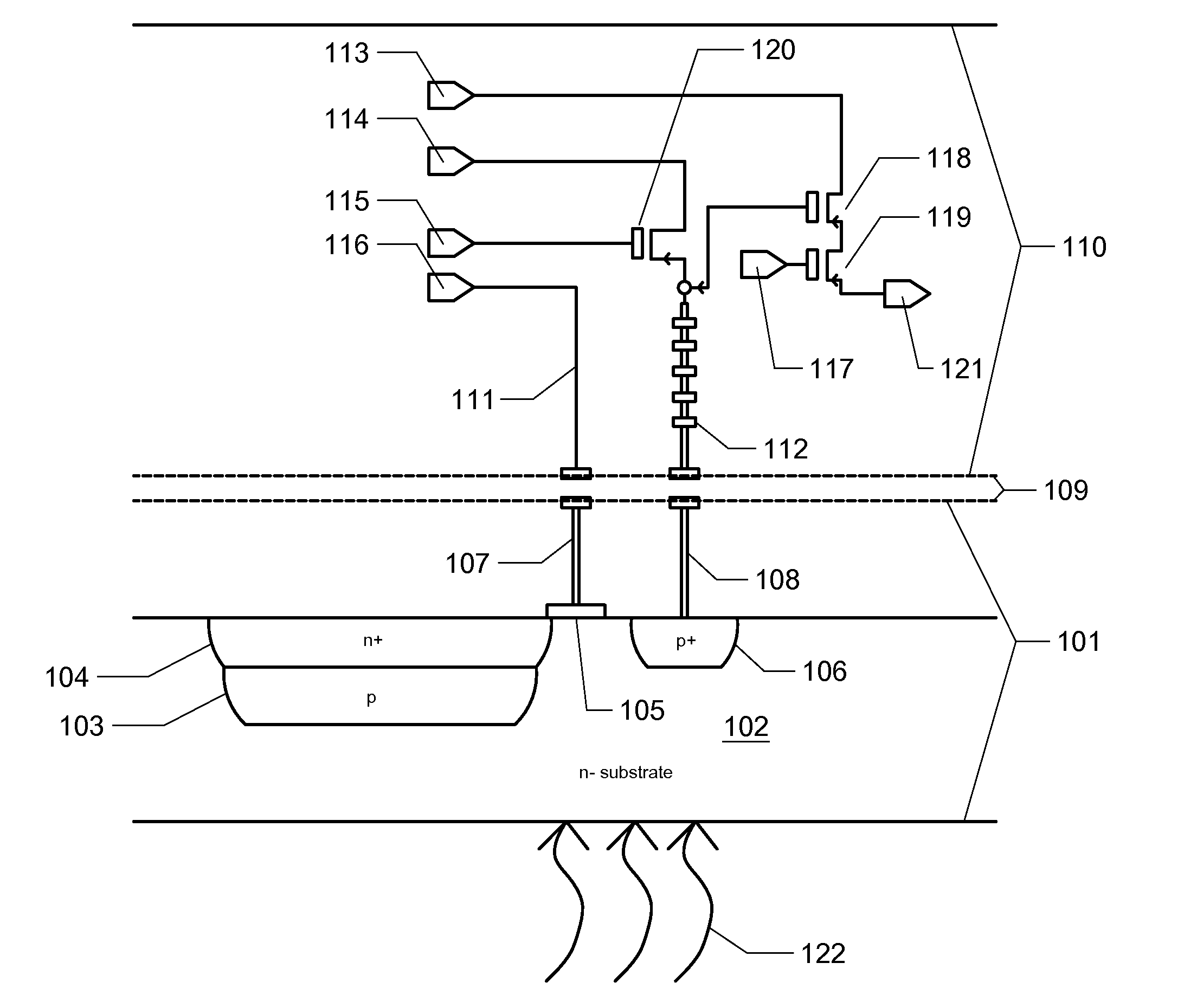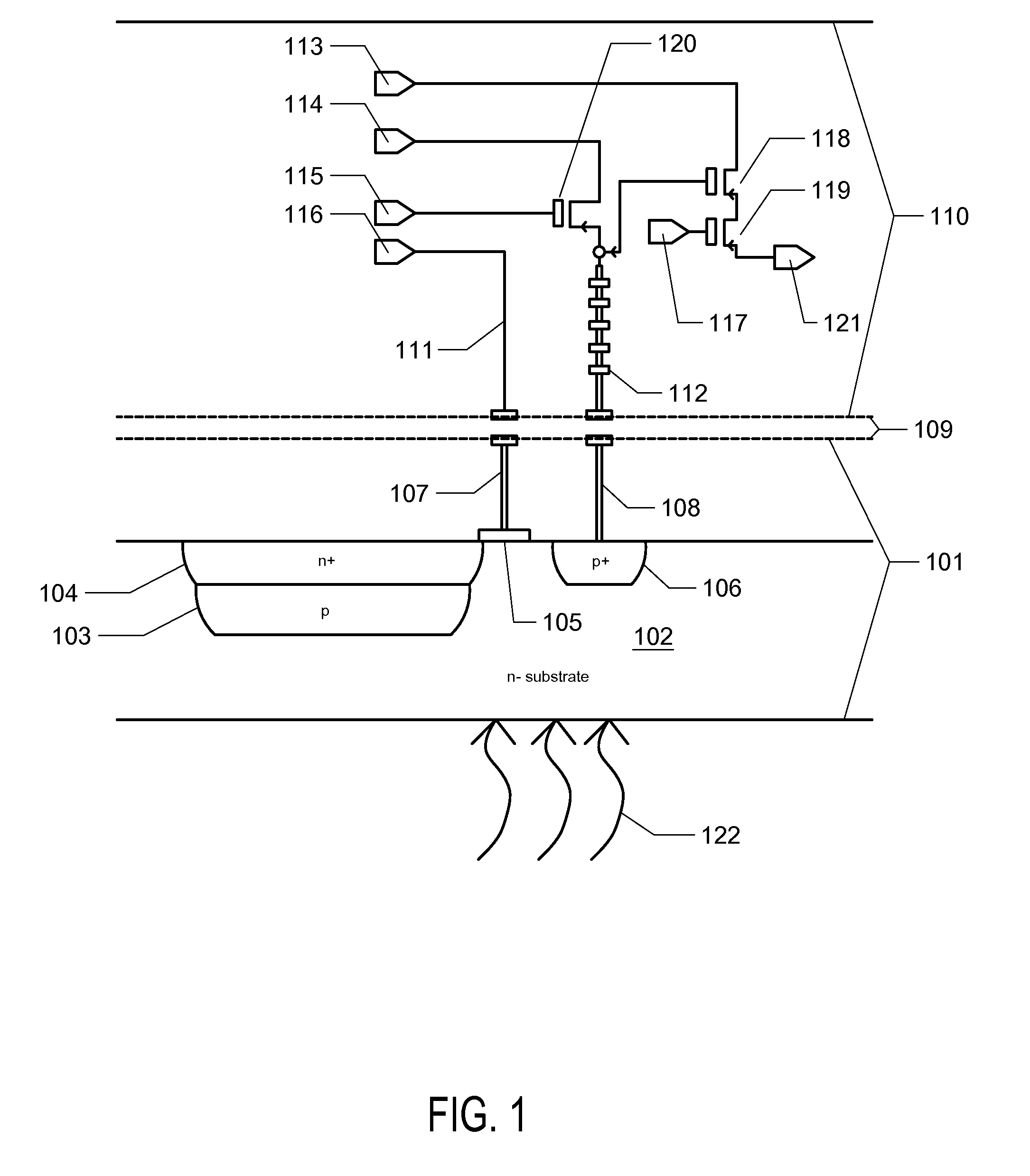Elemental Stacked Image Sensor
- Summary
- Abstract
- Description
- Claims
- Application Information
AI Technical Summary
Benefits of technology
Problems solved by technology
Method used
Image
Examples
Embodiment Construction
[0016]Novel Devices of the Invention.
[0017]In one aspect, the invention encompasses novel pixel devices utilizing stacked, bonded wafers to create functional pixels, i.e. each pixel being a discreet photosensor element capable of converting incident light to charge, converting charge to a readout signal, and outputting such signal to a memory or signal processing component. In one embodiment, the stacked pixel of the invention comprise a photodiode, a transfer gate, and two interconnects, which are fabricated on a first wafer, while the remaining components required for pixel function are fabricated on a second wafer, as illustrated in FIG. 1. The two wafers are then aligned and bonded to create a functional photosensor element.
[0018]Reference will be made to pixel components residing on a first and a second wafer, and the description herein will be directed to the configuration of the components making up each individual pixel. It will be understood that components of multiple pixe...
PUM
 Login to View More
Login to View More Abstract
Description
Claims
Application Information
 Login to View More
Login to View More - R&D
- Intellectual Property
- Life Sciences
- Materials
- Tech Scout
- Unparalleled Data Quality
- Higher Quality Content
- 60% Fewer Hallucinations
Browse by: Latest US Patents, China's latest patents, Technical Efficacy Thesaurus, Application Domain, Technology Topic, Popular Technical Reports.
© 2025 PatSnap. All rights reserved.Legal|Privacy policy|Modern Slavery Act Transparency Statement|Sitemap|About US| Contact US: help@patsnap.com



